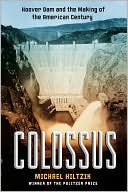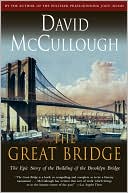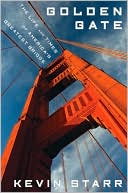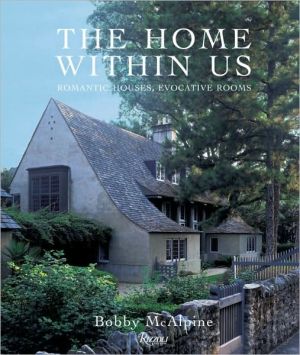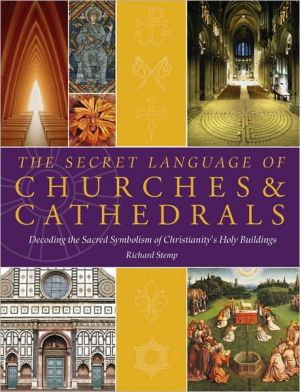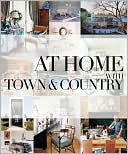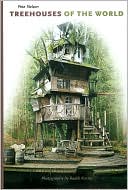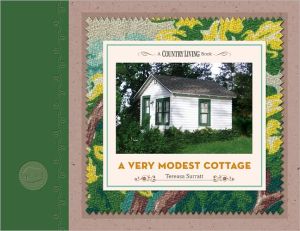Inheritance: The Story of Knole and the Sackvilles
Since its purchase in 1604 by Thomas Sackville, first Earl of Dorset, the house at Knole, Kent, has been inhabited by thirteen generations of a single aristocratic family, the Sackvilles. Here, drawing on a wealth of unpublished letters, archives, and images, the current incumbent of the seat, Robert Sackville-West, paints a vivid and intimate portrait of the vast, labyrinthine house and the close relationships his colorful ancestors formed within it. Inheritance is the story of a house and...
Search in google:
Since its purchase in 1604 by Thomas Sackville, first Earl of Dorset, the house at Knole, Kent, has been inhabited by thirteen generations of a single aristocratic family, the Sackvilles. Here, drawing on a wealth of unpublished letters, archives, and images, the current incumbent of the seat, Robert Sackville-West, paints a vivid and intimate portrait of the vast, labyrinthine house and the close relationships his colorful ancestors formed within it.Inheritance is the story of a house and its inhabitants, a family described by Vita Sackville-West as "a race too prodigal, too amorous, too weak, too indolent, and too melancholy; a rotten lot, and nearly all starkstaring mad." Where some reveled in the hedonism of aristocratic life, others rebelled against a house that, in time, would disinherit them, shutting its doors to them forever. It's a drama in which the house itself is a principal character, its fortunes often mirroring those of the family. Every detail holds a story: the portraits, and all the items the subjects of those portraits left behind, point to pivotal moments in history; all the rooms, and the objects that fill them, are freighted with an emotional significance that has been handed down from generation to generation.Now owned by the National Trust, Knole is today one of the largest houses in England, visited by thousands annually and housing one of the country's finest collections of secondhand Royal furniture. It's a pleasure to follow Robert Sackville-West as he unravels the private life of a public place on a fascinating, masterful, four-hundred-year tour through the memories and memorabilia, political, financial, and domestic, of his extraordinary family.Library JournalKnole is one of the largest houses in England, a so-called calendar house purported to have 365 rooms, 52 staircases, and seven courtyards. Its labyrinthine twists and turns seem to mimic its complex transfer, by male primogeniture, through 13 generations (so far) of the well-connected Sackville family, beginning with Knole's purchase in 1604 by Thomas Sackville and ending with its inheritance by author Sackville-West, seventh Baron Sackville. Falling somewhere between an unfussy family history and a more serious work of scholarship, this book marries the tale of Knole to a personal and absorbing story of the author's ancestors, who included such intriguing figures as Vita Sackville-West, inspiration for her friend Virginia Woolf's Orlando. VERDICT This book may be a bit esoteric for the casual history buff unfamiliar with the Sackville clan, yet it also lacks a full (rather than "select") bibliography and endnotes to please the more specialized historian. Nonetheless, it's an engaging read, especially for those who enjoy the personal histories of the British aristocracy.—Tessa L. H. Minchew, Georgia Perimeter Coll., Clarkston
INHERITANCE\ The Story of Knole and the Sackvilles \ \ By Robert Sackville-West \ Walker & Company\ Copyright © 2010 Robert Sackville-West\ All right reserved.\ ISBN: 978-0-8027-7901-4 \ \ \ Chapter One\ An Ancient Pile (1604–1608) \ Thomas Sackville, 1st Earl of Dorset\ As you walk out of the woods by Shot Tavern Gate, the turf falls away and there, settling into the gentle slopes of a classic English park below, lies what looks like a small town. A flag flutters from one battlemented tower, and a clock and belfry glitter in the summer haze above another, like the campanile of a Renaissance village. This approach to Knole – for the buildings below belong not to a village but to one of the largest privately owned houses in England – gives the walker the feeling of having wandered into a lost domain.\ The view from here has barely changed in centuries, creating a sense of enchantment not experienced on the three-mile drive from the M25. In and out of the shade of beech trees, the fallow deer step delicately, flicking their tails: descendants of the same flock that has been grazing the park for even longer than the family which owns it. For the past 400 years, Knole has been inhabited by thirteen generations of a single family, the Sackvilles. 'Here have lived, for more centuries than I can count, the obscure generations of my own obscure family,' observes the eponymous hero in Orlando, Virginia Woolf's elegiac novel about Knole.\ Orlando, the great country-house novel of the interwar years, is part of a tradition that reaches back to the poems of Horace in the first century BC and survives well into the twentieth century: in the novels of Woolf's lover, Vita Sackville-West (in The Edwardians, Chevron is Knole), of P. G. Wodehouse and Evelyn Waugh. The tradition was flourishing too in the first half of the seventeenth century, in a genre known as the country-house poem. Around 1612, four years after Knole had been rebuilt as the home of the Sackvilles, the dramatist and poet Ben Jonson wrote 'To Penshurst', a poem praising life in the Sidney family house, a mere eight miles from Knole. For some, the poem was an oblique criticism of Knole:\ Thou art not, Penshurst, built to envious show, Of touch, or marble; nor canst boast a row Of polished pillars, or a roof of gold: Thou hast no lantern, whereof tales are told; Or stair, or courts: but standst an ancient pile, And these grudged at, art reverenced the while.\ Jonson, ruing the passing of an era, counterpoints the joys of life in the Sidney home with life in other less satisfactory houses, in particular those of the nouveaux riches – newly powerful noblemen such as Thomas Sackville who had made their money at court and now wanted a second home in the country to show it off. Penshurst was not 'built to envious show'; nearby Knole, on the other hand, had many of the features of which Jonson disapproved: a 'lantern', 'courts' (seven of them, in fact), pillars, a grand staircase (painted in the most fashionable way), and chimney pieces of 'touch' (a black stone) or marble, rather than the natural, local materials enjoyed by Penshurst – the 'better marks, of soil, of air,/Of wood, of water'.\ On the ideal estate described by Jonson and his contemporaries, the hall assumed a great importance. For it was here that everyone got together: where tenants presented their lord with the fruits of their labours in the fields – 'a capon ... a rural cake, some nuts, some apples' – and where the lord, in turn, dispensed hospitality and good cheer: 'Where the same beer and bread, and self-same wine,/That is his lordship's, shall also be mine.' At the time Jonson was writing, this style of life had long since disappeared, at least on a regular basis, as the family had gradually withdrawn from the hurlyburly of medieval communal life into more private spaces where they could entertain at leisure. But it was recalled with a nostalgia to which there was a politically conservative purpose. During the sixteenth century, fewer landowners tended to farm their estates directly, but received rents from tenants instead. Inevitably, a less personal relationship developed, with the country house becoming increasingly removed from its agricultural context. Jonson was implying, by contrast, that the older and more traditional manor estates were more socially cohesive, bound together by medieval customs and mutual obligations, and by a lord's hospitality and good housekeeping.\ This implied criticism of Knole, in favour of Penshurst, is a little unfair. For Penshurst had passed into the Sidney family in 1552 – a head start of only half a century on their supposedly upstart neighbours, the Sackvilles. The Sidneys, too, had a taste for some of the fancy finishes applied to the interiors of Knole: although struggling financially, they borrowed one of the craftsmen from the Knole works to paint the imitation marble pillars in Lady Lisle's banqueting house. In his funeral oration, George Abbot, Archbishop of Canterbury, praised Thomas Sackville, claiming that: 'No nobleman was more given to hospitality, and keeping of a great house ... for more than twenty years besides workmen and other hired, his number [of household at his various establishments] at the least hath been 220 daily, as appeared upon cheque-roll. A very rare example in this present age of ours, when housekeeping is so decayed.'\ Knole, like Penshurst, had developed over time, with a core dating from the fourteenth or fifteenth century that had been added to and adapted in the sixteenth century. It, too, was an 'ancient pile', sprawling and settling comfortably into its landscape. In Knole and the Sackvilles, Vita Sackville-West described her ancestral home as 'above all, an English house ... I make bold to say it stoops to nothing either pretentious or meretricious. There is here no flourish of architecture, no ornament but the leopards.' In the final paragraph of the first chapter, she concluded that, 'Knole was no mere excrescence, no alien fabrication, no startling stranger seen between the beeches and the oaks. No other country but England could have produced it, and into no other country would it settle with such harmony and such quiet ... It is not an incongruity like Blenheim or Chatsworth, foreign to the spirit of England. It is, rather, the greater relation of those small manor houses which hide themselves away so innumerably among the counties.'\ Vita imagined Knole growing organically from the soil of southeast England, and then melting 'into the green of the garden turf, into the tawnier green of the park beyond, into the blue of the pale English sky'. The Sackvilles, too, she saw as quintessentially English, like their home. But how does the relationship between a place and the people who live there start? And where do ideas about the changelessness of this relationship, about the 'home', originate?\ There is a portrait, in the National Portrait Gallery, of Thomas Sackville in 1604, the year he acquired Knole. He is seated at one end of a table with delegates to a peace conference from England and Spain – eleven of the most senior statesmen from two of Europe's most powerful nations. A gentle breeze through the open window rustles the leaves of an indoor plant, bringing some relief during the eighteen conference sessions that took place in Somerset House that summer. The room in which they are sitting is luxuriantly furnished: walls hung with tapestries, the table covered with a rich 'Turkey' carpet, the chairs upholstered with silks and velvets. Could these have belonged to Thomas Sackville? When Robert Cecil, one of the five English delegates, had been searching around for suitably rich furnishings for the Somerset House conference, the Earl of Nottingham, another of the grandees in the portrait, told him that he had nothing suitable but that Thomas Sackville, now Earl of Dorset, owned the best chairs in London.\ All of these men shared a taste for fine things, a love of luxury characteristic of the Renaissance magnate. There is, for example, a list of jewels, described almost sensuously in Thomas's will, in far greater detail than that applied to the estates he was bequeathing to his family. It was the buildings, though, that were to prove the greatest legacy of this group. There was a country-house building boom in the sixteenth and early seventeenth centuries, reaching such a peak of competitive activity during the reign of King James I that Bishop Goodman observed that 'no kingdom in this world spent so much in building as we did in his time'. These houses – known sometimes as 'prodigy houses' – were built by a group of lawyers, landowners, privy councillors and merchants, many of whom were self-made men rather than of ancient aristocratic lineage. They owed their success to holding office at court rather than to great feudal estates. The trend had been promoted by Queen Elizabeth I, who was famously stingy and chose, on royal progresses in the summer accompanied by a retinue of 150 privy councillors and retainers, to be put up for free in the great houses that her courtiers had built, or extended, for her use. The courtiers, in turn, hoped that a successful visit would result in favours from the monarch.\ Sir Christopher Hatton built Holdenby; William Cecil, Lord Treasurer to Queen Elizabeth, built Burghley first, and then – for its commutable convenience – Theobalds, just ten miles north of London, in Hertfordshire, which Elizabeth visited thirteen times and treated almost as her own. It was at this Renaissance chateau, with its five courtyards and its front a quarter of a mile long, that Thomas Sackville, Cecil's successor as Lord Treasurer, waited with Cecil's son, Robert, in May 1604 to welcome King James I on his journey south into his new kingdom. In turn, Robert Cecil, Earl of Salisbury, succeeded Thomas Sackville as Lord Treasurer and spent almost £40,000 on Hatfield between 1607 and 1612. He died the same year as his house was completed, having passed only a few nights in the building. And Thomas Howard, Earl of Suffolk, who became Lord Treasurer in 1614, built Audley End of which James I observed wryly, on his one visit to the house, that it was too big for a king but fitting for a Lord Treasurer.\ As children, we used to crawl through the spaces under the eaves of Knole, the very interstices of the house, and out onto the roofs. Here, daring each other to go just that one step farther towards the edge, we would catch unexpectedly giddy views of the skyline of turrets and finials, and the complex of courtyards below; and we would come right up close to those status symbols that meant so much to Thomas Sackville, Earl of Dorset, the first member of my family to live at Knole. The story of Thomas's success is stamped on the lead drainpipes that directed rainwater into cisterns in the courtyards, in the form of an earl's coronet and the initials 'TD' for Thomas Dorset and a date (1605 or 1607). It is shouted from the tops of the gables by twenty-seven heraldic stone leopards carrying the family coat of arms. Thomas's tale is not exactly one of rags to riches, but a more typically Tudor one of country gentleman to aristocrat, of timber merchant and ironmaster in the Weald of Kent to courtier and statesman.\ Like most ambitious families of the time, the Sackvilles claimed that they had come to England with William the Conqueror, before settling first in Buckinghamshire and then at Buckhurst in Withyham in Sussex. There's a seventeenth-century family tree at Knole that traces the lineage back to the early Middle Ages, one of the first stirrings of a cult of ancestor worship that permeates the history of Knole and the Sackvilles. Thomas's grandfather, John Sackville, had married Anne Boleyn's aunt, Margaret. This made Thomas, born in 1536 – the year in which Anne was executed – a second cousin, and therefore one of the closest relatives of Queen Elizabeth (she had few enough), on her accession to the throne in 1558. Thomas's father, Richard, had been a lawyer, businessman and courtier, exploiting the lucrative opportunities afforded by public office (as future generations of the family were to do). As Chancellor of the Court of Augmentations, which administered the estates of monasteries dissolved by Henry VIII, Richard could cherry-pick former Church lands. This earned him a fortune and – according to the writer Robert Naunton, whose Fragmenta Regalia, or Observations on the late Queen Elizabeth, her Times and Favourites, was published the following century – the nickname 'Fillsack'. Gradually the Sackvilles acquired larger estates. Many of these derived their income from the sale of timber to the Wealden iron works, which used charcoal to fuel the blast furnaces. Richard Sackville also invested directly in forges, and profited from the production of cast-iron guns. (Continues...)\ \ \ \ \ Excerpted from INHERITANCE by Robert Sackville-West Copyright © 2010 by Robert Sackville-West. Excerpted by permission of Walker & Company. All rights reserved. No part of this excerpt may be reproduced or reprinted without permission in writing from the publisher.\ Excerpts are provided by Dial-A-Book Inc. solely for the personal use of visitors to this web site. \ \
Plan of KnoleFamily TreePreface1 An Ancient Pile (1604-1608) Thomas Sackville Sackville, Thomas 12 An Owl in the Desert (1608-1624) Anne Clifford Clifford, Anne 253 'A poore, unsuccessfull Cavalier' (1624-1652) Edward Sackville Sackville, Edward 444 Restoration (1652-1677) Richard Sackville Sackville, Richard 695 The Perks of Office (1677-1706) Charles Sackville Sackville, Charles 786 Folly and Sence (1706-1769) Lionel Sackville Sackville, Lionel 1017 A Grand Repository (1769-1799) John Frederick Sackville Sackville, John Frederick 1278 'The very name of Sackville... near extinction' (1799-1888) The Dowager Duchess and Her Descendants 1439 An Inheritance in Crisis (1888-1908) Baron Sackville Sackville, Baron 17010 A Family at War (1908-1928) Baron Sackville Sackville, Baron 20311 'A disobliging new world' (1928-1946) Baron Sackville Sackville, Baron 23612 Under New Ownership (1946) Knole and the National Trust 252Select Bibliography 269Acknowledgements 279Index 283
\ Library JournalKnole is one of the largest houses in England, a so-called calendar house purported to have 365 rooms, 52 staircases, and seven courtyards. Its labyrinthine twists and turns seem to mimic its complex transfer, by male primogeniture, through 13 generations (so far) of the well-connected Sackville family, beginning with Knole's purchase in 1604 by Thomas Sackville and ending with its inheritance by author Sackville-West, seventh Baron Sackville. Falling somewhere between an unfussy family history and a more serious work of scholarship, this book marries the tale of Knole to a personal and absorbing story of the author's ancestors, who included such intriguing figures as Vita Sackville-West, inspiration for her friend Virginia Woolf's Orlando. VERDICT This book may be a bit esoteric for the casual history buff unfamiliar with the Sackville clan, yet it also lacks a full (rather than "select") bibliography and endnotes to please the more specialized historian. Nonetheless, it's an engaging read, especially for those who enjoy the personal histories of the British aristocracy.—Tessa L. H. Minchew, Georgia Perimeter Coll., Clarkston\ \

